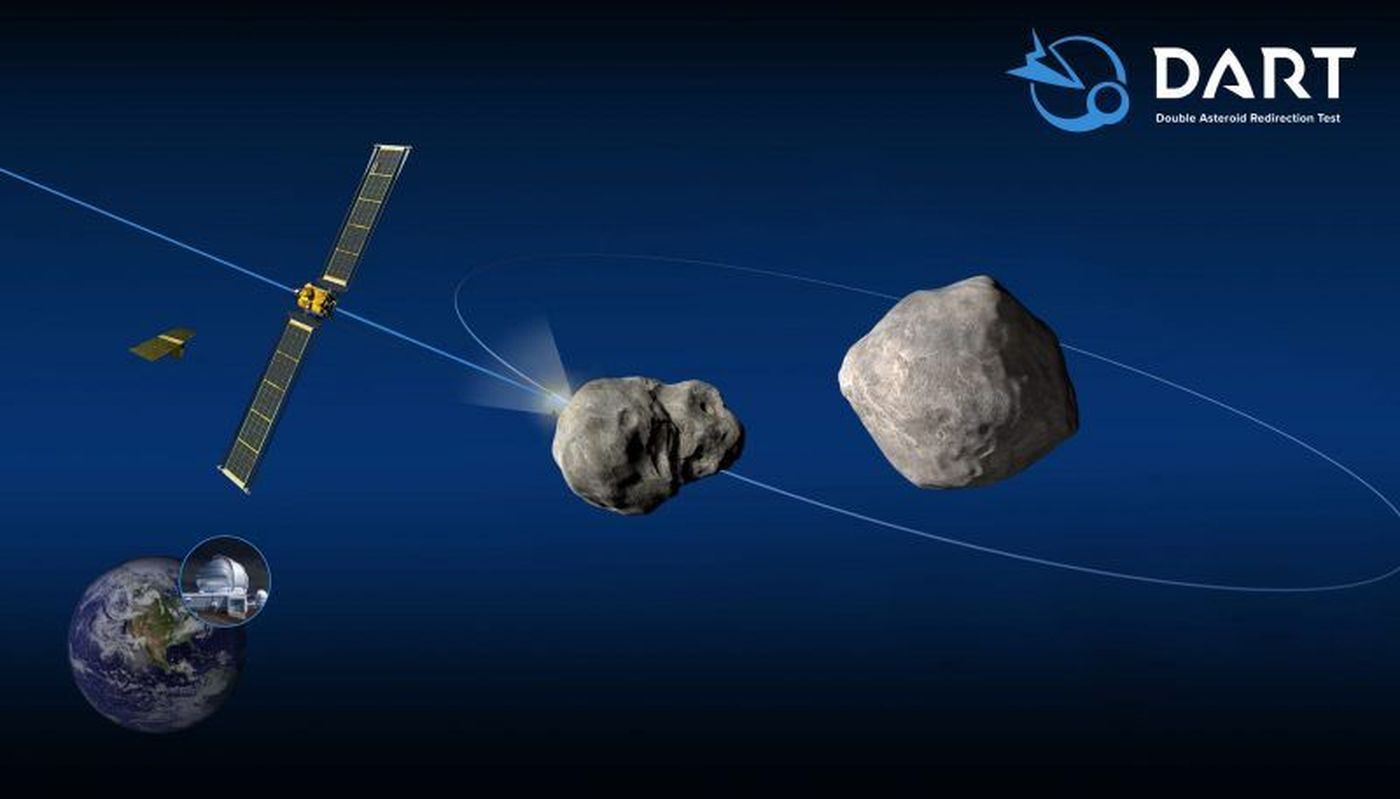DART mission: the impact on the asteroid will be immortalized by the James Webb and Hubble space telescopes!
This Monday, September 26 (with a short day’s delay), the small probe of the DART mission (Double Asteroid Redirect Test) will collide at a speed of more than 24,000 km/h with the small asteroid Dimorphos which evolves around Didymos (a larger asteroid). This frontal shock is the objective desired by NASA, which is thus trying to determine whether this type of impact can be an effective solution in the event of a major risk of shock between the Earth and a “killer of worlds” asteroid. NASA indeed hopes that once reached by the probe, Dimorphos changes its trajectory slightly under the effect of the impact (what is called a kinetic impact effect). If everything goes as planned, Dimorphos should therefore modify its orbital trajectory around Didymos.
The results of this life-size test will be scrutinized from all possible angles, first by the small satellite LICIA Cube which was deployed a few weeks ago by the DART spacecraft, by the NASA Lucy spacecraft, but also by the Hubble Space Telescopes and the mighty James Webb. ESA joins this team of “voyeurs”: the Hera mission scheduled for 2027 will also make it possible to analyze the consequences of the impact.
The LICIA Cube should be the first on the spot, followed by the James Webb Telescope (it will need a few minutes to adjust its position) and by Hubble (which will be ready to observe the two asteroids about 1/4 hour after the impact). Very large means are therefore used to retrace the epilogue of the DART Mission, but after all, it is perhaps the future of the Earth that is at stake…


